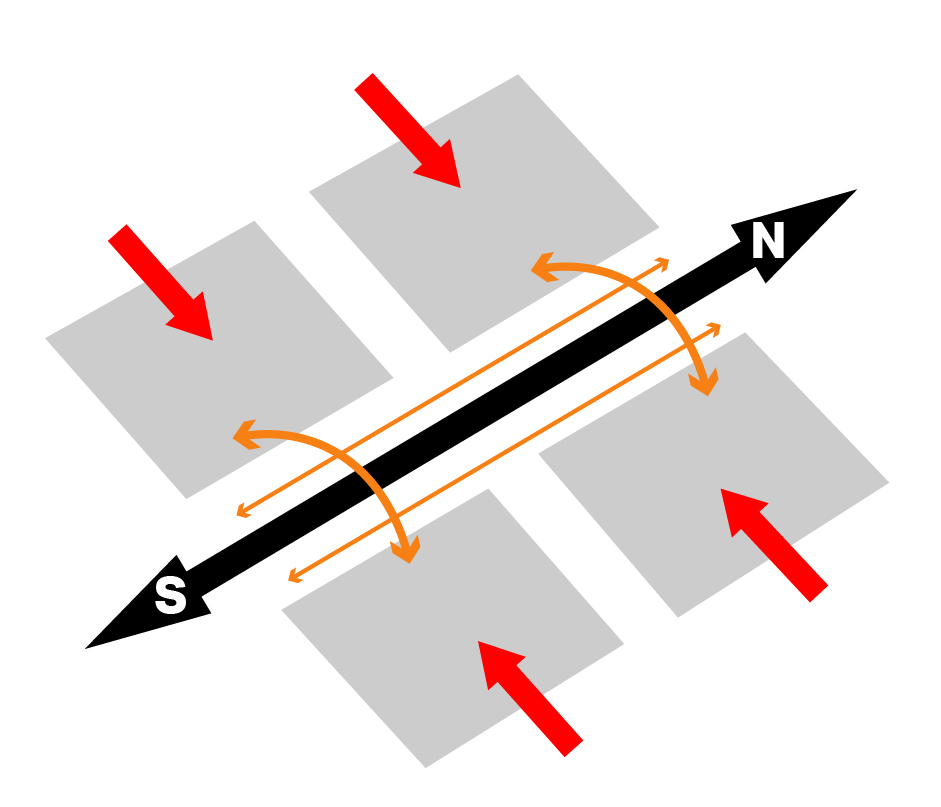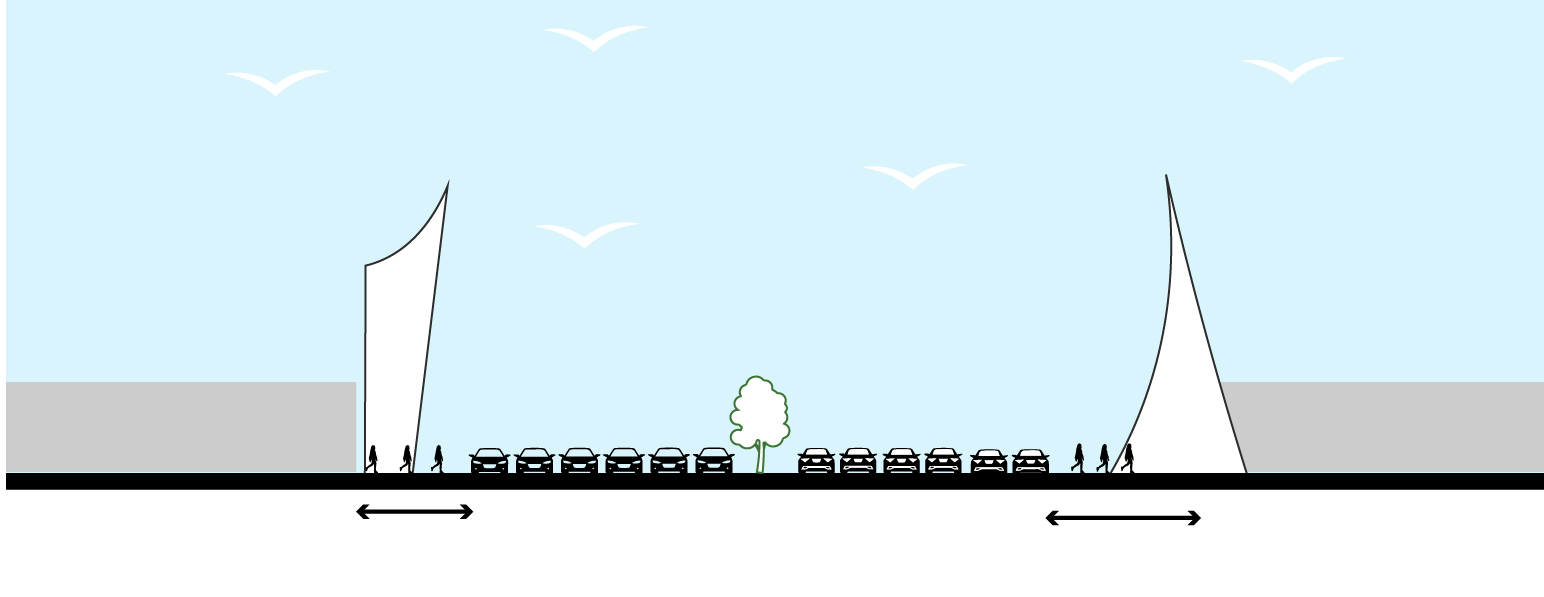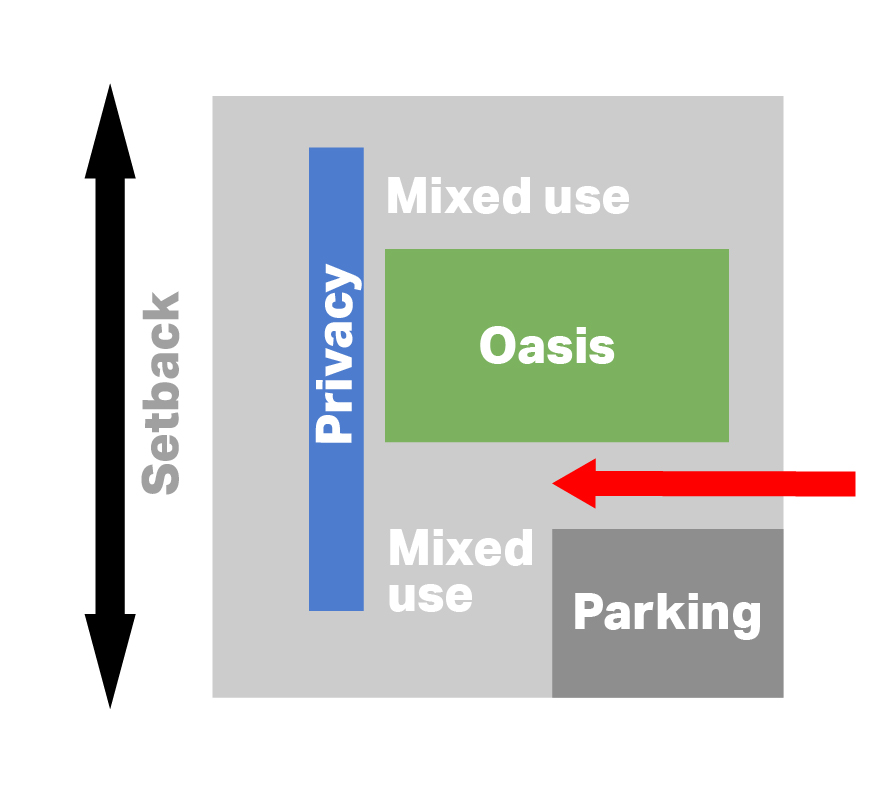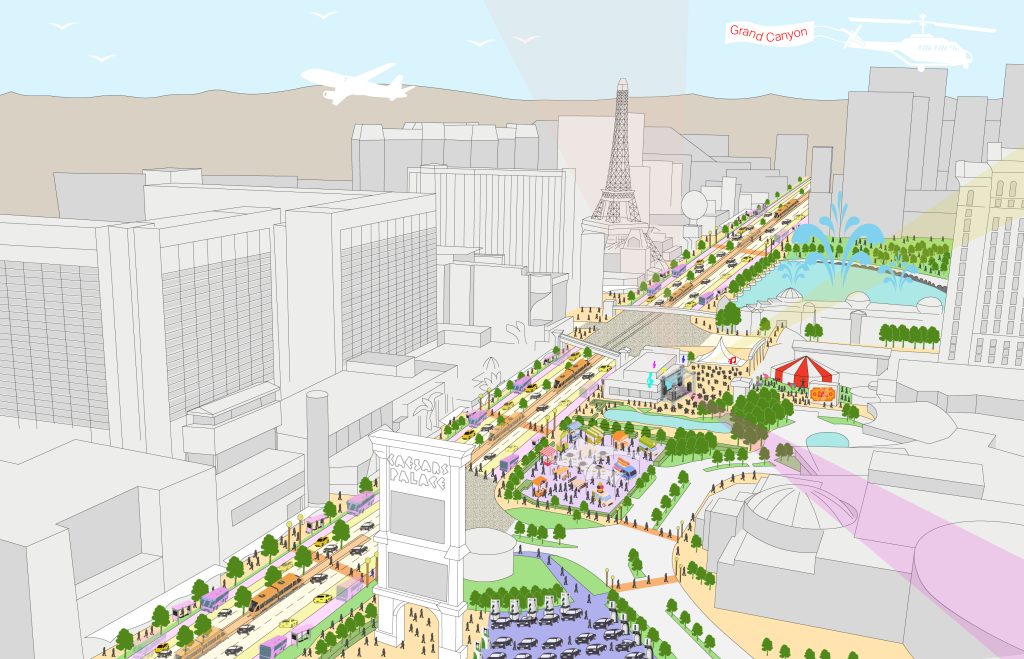
The making of an Entertainment Capital: A Las Vegas story from an urban designer’s perspective
Las Vegas’ journey to what it is today counts about 200 years. This is great and everything, but when it comes to city planning and design, there are a number of challenges associated with it.
In principle, when designing a place from scratch – say a greenfield site -, a vision is formed first, and design comes after. Simple as that. However, it gets more complicated when an established place goes through a number of place-re-brands over the years. With every new city strategy that aims to transform a place, the potential revision of the existing built environment should be also considered. How could it not be? The new vision should be aligned with the urban fabric and they both need to tell the same new, revised, story. Can you imagine what would happen if they did not?
The fast-evolving city of Las Vegas is the perfect case study to answer this question. From a place for gambling, prostitution and alcohol (in the 30s), to the perfect place for weddings, express divorces and musicals (in the 50s), to a place of resorts and casino-hotels (in the 60s), to the era of mega resorts (in the 90s) and themed hotels (in the 00s), it has gone through multiple transformations, currently being branded as the mega entertainment destination. The revised famous motto is now: ‘What happens in Vegas, only happens in Vegas’. The new vision aims to create a place for vibrant and unforgettable experiences, all within reach from the Strip.
Does the built environment, however, agree with it? Do they tell the same new story? This blog post will try to answer this by analysing the historic growth and transformations of Las Vegas Strip, as well as the built environment, and evaluating the findings under the lens of the new vision as set by the Las Vegas Convention and Visitors Authority (LVCVA).
Brief history of Las Vegas and the Strip
From a desert oasis to a global tourist destination, the city has come a long way as the entertainment capital of the world and its transformation is significant. The construction of Hoover Dam in 1931 was a catalyst for growth bringing a large number of workers in the area. The rapid increase in the population led to the establishment of communities and due to the fact that a large portion of them were men, it created a market for large-scale entertainment leading to the development of casinos and showgirl theatres. In addition to this, the legislation of gambling in the later years acted as another catalyst making Las Vegas the gambling capital of the world.
The continuous growth of the population and the entertainment establishments brought increasing demand in the area with big stars like Frank Sinatra, Dean Martin, Bing Crosby and others performing in intimate settings. This made it clear that gambling was no longer the only attraction and that accommodation would be needed to cater for this demand. That was the beginning of the casino resorts, whilst the first casino-hotel was built in 1941 opening a new era with the establishments offering accommodation, gourmet food, star-studded entertainment, showroom and swimming pool. From that point and after, every other decade the hotels would become bigger and better creating ‘revised’ versions of the original place-branding. The 1980s was the era of the ‘megaresorts’, whilst the 1990s involved the rise of the ‘theme’ hotels soughting to immerse visitors in a particular experience. Characteristic examples are MGM Grand, Bellagio, Planet Hollywood and CityCenter that started to shape the city’s skyline as we know it today. The new century has brought other new trends to Las Vegas promoting a family-friendly vibe to attract bigger groups. Overall, the Strip has gone through a massive transformation from being a place for gambling, prostitution and alcohol to then, a place for musicals, weddings and express divorces, whilst today is a family destination offering novelties such as the abolition of state taxes for individuals and corporations. It is a city that has always been on the border of legality.
Analysing the Strip
At first glance, the Strip is a complex system organised in a different way than what we are used to seeing in urban renewal projects. The level of disorder, however, that characterises this place, if carefully analysed, can reveal patterns and a level of order as well.
Starting from the outside, the external space includes the main street, wide pavements, ‘streets-in-the-sky’ and the individual plots (hotel-casinos). The Strip acts as the main boulevard facilitating traffic from north to south, whilst any secondary vehicular movement takes place at the back, for instance entrance to the hotels-casinos or car parking facilities. This arrangement makes the Strip a ‘pass-through’ attracting high traffic volumes and thus, bisecting the place. If it was not for the ‘streets-in-the-sky’ elements, crossing for pedestrians would have been an impossible task. These offer a number of crossing points along the Strip facilitating pedestrian movement in and out of the resorts (See diagram 1).
Overall, the vehicular and pedestrian movements are so strictly organised that there is no room for flexibility or spontaneity. Each path has been calculated to maximise benefits in terms of time, speed and legibility. The pace is so fast and the communication activity overwhelming that the movement networks need to feel self intuitive – and they are.

The built environment takes legibility to the next level. Architecture is replaced by communication strategies. ‘Communication dominates the space ’, as Venturi mention in their book ‘ Learning from Las Vegas ’, ‘as an element in the architecture and in the landscape ’. This is not something new, invented only for the Strip. Similar strategies are followed in airports and train stations where there is dominance of signs over space aiming to successfully and easily navigate people around. Monumental-scale features shape the skyline of the Strip and act as landmarks for each resort. Their strategic location by the main street makes them visible, even before the actual hotels which are set back. Different styles and signs make visual connections enhancing legibility. Their impact is also enhanced due to the low rise development of the rest of the built environment. The only features that shape the skyline are the landmarks and the hotels themselves (See diagram 2).

Regarding the resorts themselves, although each one of them has a different style and layout, the typology they all use is quite similar. Due to the complexity of the programs they offer, not much variety can be achieved when it comes to typologies. Main entrances are usually at the back of the resort or on the side and rarely at the front to accommodate driveways, turnaround points and parking. The mixed use facilities including the casino, shops, bars and restaurants are found on the ground floor which is low ceiling, maximising the benefits of the air conditioning, and take up almost the entire plot. In fact, the gambling rooms act as the lobby area welcoming people into the resort. The buzz from the outside follows you inside through the light, music and crowds. The oasis is found in the inner rooms where the patio is located offering opportunities for relaxation. For the ultimate relaxation, however, one needs to resort to the actual hotel rooms to find peace and privacy. The hotel accommodation is setback from the main road, extends vertically and it can be found next to the oasis (See diagram 3).

Place-branding before…till today
The existing built environment is a result of a series of transformations over 200 years. The common parameter, however, throughout the time has been the focus on the casinos and casino-resorts. The movement networks, vehicular and pedestrian, are organised around them and aim to service them at all times. The lack of crossings on the main street is justified, since bridges are strategically located to connect the key landmarks only – the casinos. No other crossing points are necessary and no other ‘spontaneous’ walking is encouraged. One steps out from the casino, only to go visit another. There is no time to waste – everything has already been considered for the benefit of the consumer.
The place-branding is clearly casino-oriented underpinned by commercial bombarding. The landscape is complex and so are the programs which call for ‘complex combinations of media beyond the purer architectural triad of structure, form and light ’ (Venturi). The key landmarks along the Strip act as active frontages animating the streetscape, attract activity, and navigate people around. They are the key features of the landscape and without them there is no place since the spatial relationships are mainly made by these symbols and not so much by built forms.
Place-branding today…till tomorrow
The new era of Las Vegas moves away from the casinos and takes a more holistic approach. The new campaign focuses on integrated programs that offer a range of different experiences to the visitors across the Strip. In fact, Las Vegas is promoted as an entertainment, business, trade, travel, sports and wedding destination. The new place-branding does not focus on one sector only, but it is oriented around experiences in general, of any kind. The old branding of ‘What happens in Vegas, stays in Vegas ’ is now superseded by ‘What happens in Vegas, only happens in Vegas ’.
Is there a mismatch?
It seems that the new campaign is not fully aligned with the existing condition of the urban fabric, as the latter still serves the former approach. In other words, whilst the new campaign talks about the future, the built environment is hung up on the past.
The new place-branding talks about experiences that can take place anywhere, not just within the casino-resorts. This statement alone, could be translated into revised movement patterns where there is more spontaneity on the street. A revised Strip that ceases to be merely a boulevard and begins to offer more options. It becomes the catalyst for the new campaign.
The Strip needs to become a facilitator, but it currently acts as a barrier between the two sides. It needs to feel part of the place, but it currently clutters the scene. The new campaign calls for a compact place where many things happen at the same time and the Strip is the main corridor that could take people from point A to point B in no time.
This is not some crazy and unrealistic proposal to pedestrianise the Strip and close traffic, but a pitch for gradually changing its character to cater for the future needs of the place. The aim is to make the Strip more pedestrian-friendly with low key enhancements for instance, adding more crossing points, improving paving materials, widening pavements on each side, implementing green verges and street trees. These interventions will bring people back on the street and encourage pedestrian movement. In addition, outdoor events, as part of the new campaign, for instance, trading events, music shows, sports events etc, will strengthen pedestrian flows. The more reasons people are given to cross the street, the more they will.
Crossing points and stronger pedestrian flows will also affect the vehicular movement and character of the Strip. They will encourage courteous driving, drop vehicular speeds and ultimately create the impression of a shared space rather than a boulevard-like street. No-one wants to walk or cross a boulevard, but everyone feels more comfortable walking in a shared space. In fact, the Strand in Liverpool city (UK) is a great example of a seriously congested road that was transformed into an all-users-friendly one by implementing some of the above-mentioned interventions.
In addition to this, later stage proposals could include promotion of sustainable means of transportation, for instance electric buses to transfer people to the airport or events along the Strip, electric taxis, as well as an electric touristic tram to cater for visitors’ needs. The ultimate goal would be to limit the access to non-electric vehicles along the Strip to the minimum, aiming to transform it into a corridor for ‘sustainable-only’ modes of transport.
While the Strip is being transformed into this new pedestrian-friendly shared space, other alternative routes, at the back of the Strip, could be reconsidered and prioritised for heavier traffic offering better connections to destinations as well as improved transport infrastructure.
The sketch below is an illustration of the proposed ‘vibe’ and character of the Strip. I imagine a street that connects both sides and gives the impression of a compact place that allows people to easily go from point A to point B to point C and D and E throughout the day. A street that gives them options to either walk, take an uber, a bus, the tram to reach their destination whether that is a theatrical show, a music festival, a business conference, a trade event, the airport or the meeting point for the helicopter to take them to the Grand Canyon.
Everything feels within reach, easy to access and with no sweat (literally and metaphorically).

Conclusion
Revisioning and rebranding places with long standing history could be challenging. Long history means many layers on the urban environment and thus, high complexity. A successful place-branding tells a complelling story about the place highlighting key existing traits and promoting history, whilst planning for the future. It goes hand in hand with the urban environment, since they both have to share the same story to create a strong ‘sense of place’.
This is a real challenge in fast-changing and developing places, like the Las Vegas Strip. As mentioned above, it started as a place for gambling, prostitution and alcohol (1930), then a place for weddings, express divorces and musicals (1950), then a place for casino-hotels and resorts (1980), as well as mega-resorts (1990) and themed casino-hotels (2000s). These changes in place-branding however, had one thing in common; they were all casino-oriented, and thus, the built environment did not have to change much throughout the years.
The current place-branding however, changes the game completely. It envisions a place beyond the casinos, it understands that mix of uses is better and wants to have it all. It ‘breaks’ the casino walls and talks about experiences of any kind. This revolutionary vision, however, calls for changes in the built environment as well.
It is clear that positive steps have been made towards this direction, including the public realm next to Flamingo hotel that connects the main street to the High Roller and the market place opposite the Horseshoe hotel and casino. Both belong to the new ‘era’, welcoming people to the open space away from just the casinos offering a range of other experiences (entertainment, food, shopping). Interventions like these, connecting to the main street and other key destinations, will bring the Strip to the next level – ready to embrace the new vision.
